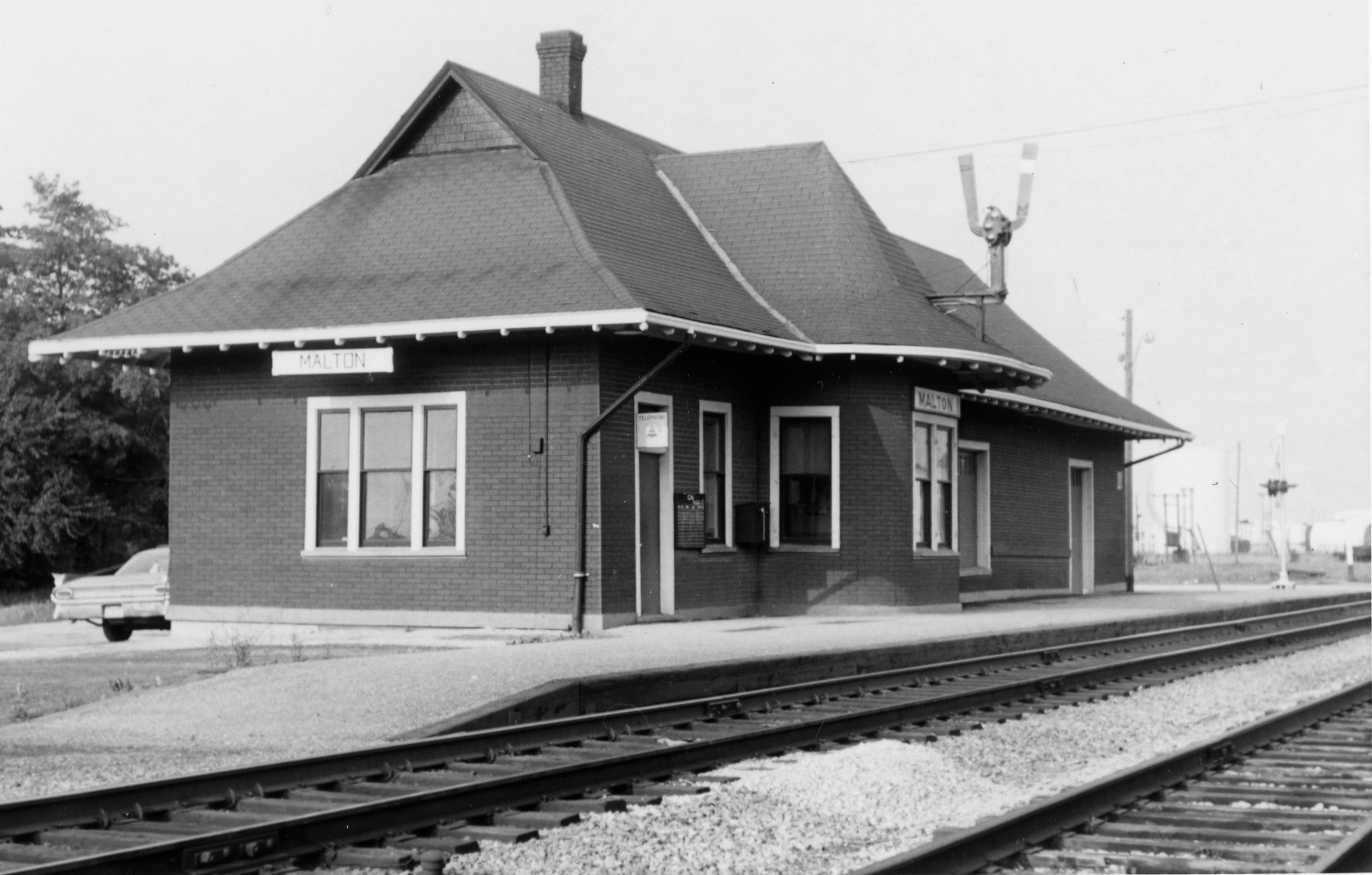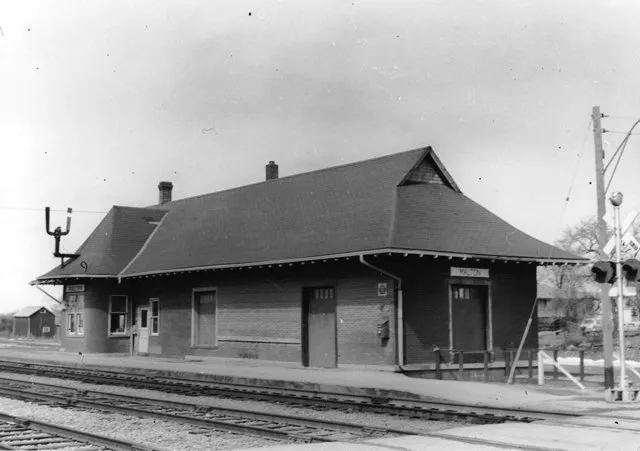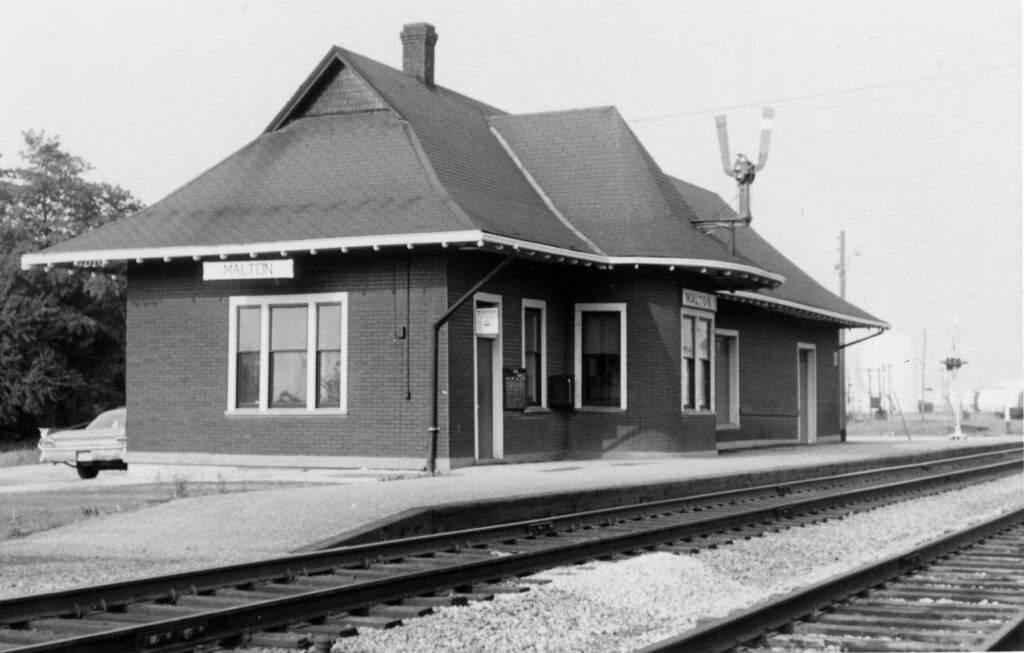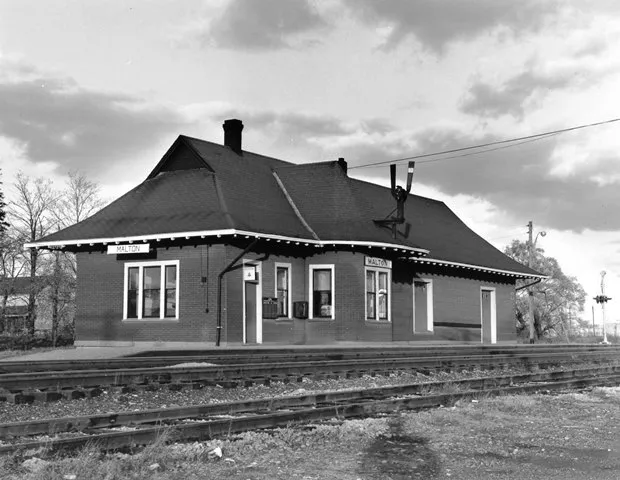Summary
The first train station in Malton was built in 1855 by the Grand Trunk Railway while its construction was progressing westward from Toronto, and the first train arrived there in October of the same year. While no photos are known to exist of the first station, it’s believed to have followed the standard design the Grand Trunk used extensively during the 1850’s. It would have been a single-storey structure with five to seven arched doorways on the front and back walls, and a pair of arched windows at each side. Four chimneys would have adorned each corner of the pitched roof. The arrival of the railway brought increased prosperity to the community, nearly doubling the population from 350 in 1850 to 600 in 1864.
The Grand Trunk widened their line from single track with passing sidings to continuous double track between Toronto and Sarnia between 1903 and December of 1905. Several years later in 1912, the station was replaced with a larger brick structure that was adequate for the growing population of Malton. The waiting room was located in the west side of the building, located next to the station agent’s office in the bay window facing the tracks. A long baggage room extended outward from the east side of the building. The Grand Trunk encountered financial difficulties during the 1910’s, and in 1923 it was nationalized and merged into newly-formed Canadian National. By 1941, a total of ten trains stopped at Malton on a daily basis.
The popularization of automobiles in the early to mid 20th century led to a decline in passenger ridership. This was further affected by the completion of Highway 401 to the south in 1959, along with numerous other nearby highways established around the same time. The post-war period brought suburban housing subdivisions to Malton as it grew into a bedroom community of Toronto, and the train station played an active role in facilitating commuter travel. Train service briefly increased to 16 trains per day by 1957, but this was short lived and service declined through the 1960’s. It had decreased to four trains per day by 1974, and most of them had their conventional equipment replaced with more economical Budd Rail Diesel Cars to reduce operating costs.
That year, all commuter service between Toronto and Georgetown was taken over by GO Transit. A new commuter station was built 0.8 kilometers to the east and the CN station was subsequently demolished.
Condensed Station Info:
| Location: | Served By: | Current State: | Date Built: | Date Demolished: |
| Scarboro Street near York Street | Grand Trunk (1856 – 1923) Canadian National (1923 – 1974) | Demolished | 1856 (First) 1912 (Second) | 1912 (First) 1974 (Second) |





